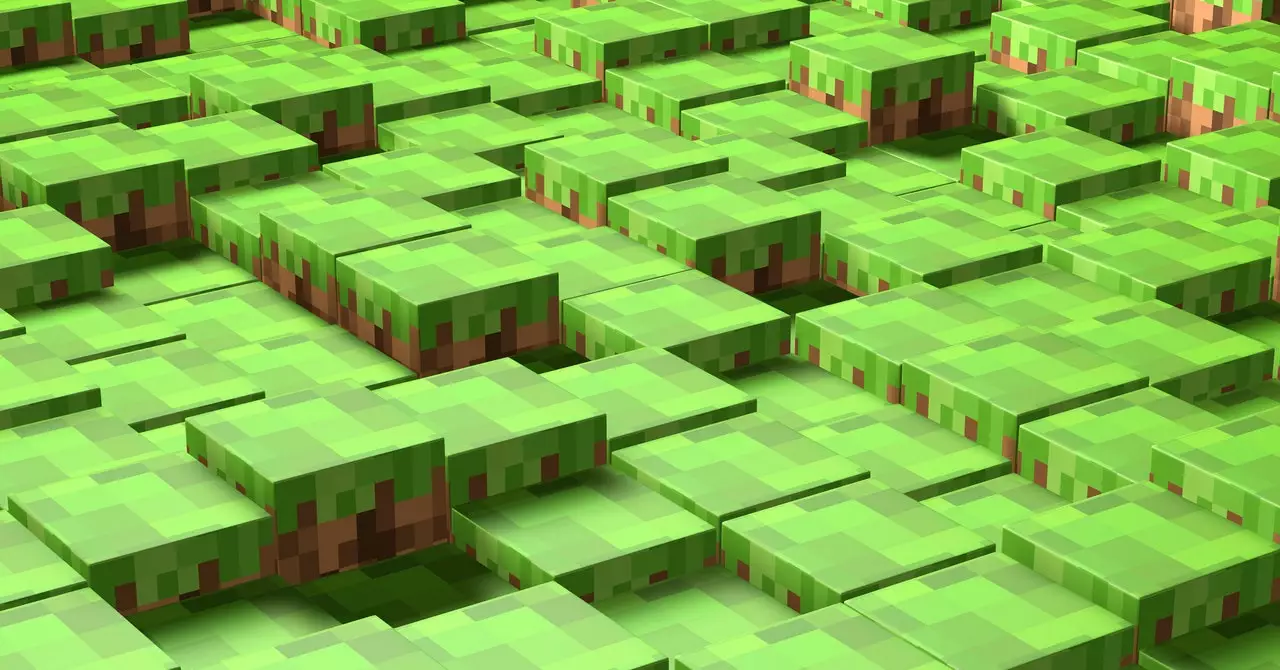Over a decade since its initial release, Minecraft continues to captivate players with its inventive gameplay and limitless creative potential. Its open-world design, characterized by blocky aesthetics and sandbox freedom, has established it as a cultural phenomenon. Yet, as technology evolves, new games emerge that attempt to push the boundaries of what we know. Oasis, a recently launched game from Israeli AI startup Decart, takes the foundations of Minecraft and infuses them with a peculiar, almost surreal twist. By harnessing artificial intelligence (AI) to construct its virtual world, Oasis not only pays homage to its predecessor but is also a bold exploration into the uncharted territories of generative gaming.
What sets Oasis apart is its innovative use of a transformer-based AI model that generates visual content in real-time, eschewing conventional game design practices. This model, akin to those found in language generation, has been trained specifically on countless examples of players engaging with Minecraft. Instead of developers manually coding the game’s rules, the AI autonomously crafts each frame in a mesmerizing dance of creativity. This novel technique introduces an element of unpredictability that is as fascinating as it is disconcerting. The visuals created in Oasis are subject to change with each interaction or even with a mere fleeting glance, resulting in a fluid experience that challenges players’ perceptions of stability and permanence in the gaming universe.
The foundations of Oasis reveal the potential of AI in video games, yet the technology’s current form raises critical questions about consistency and coherence in gameplay. While the idea of an AI driving game mechanics sparks excitement, it also invites skepticism; a common critique is that the generative nature of the game can lead to an erratic experience. Textures may shift unexpectedly, and the environment can morph into something almost alien if players stare too long at any particular element. This sense of unpredictability serves as both a selling point and a drawback: while it enhances the surreal quality of the game, it can detract from traditional gaming elements like narrative progression and goal-oriented gameplay.
Player Engagement: The Quest for Meaning in Chaos
Oasis thrives on curiosity and exploration, allowing users to play for free, and it has quickly garnered a following. Players find themselves lost in a labyrinth of bizarre landscapes—strange creatures, inexplicably placed objects, and scenery that defies the laws of physics. The game invites creativity, offering players the option to upload custom images and see them translated into block-based scenery. This capability showcases the promise of merging AI with gaming, allowing players to influence the world to a certain extent, and providing a unique canvas for self-expression.
However, while the carefree exploration of this uncanny environment intrigues many, experts caution against interpreting the game as a fully-fledged successor to classic titles. Noted game designers like Julian Togelius and Frank Lantz point out that while Oasis has show-stopping potential, it currently exists in a state awkwardly suspended in an “uncanny valley.” The game’s reliance on AI introduces an inconsistency that can be off-putting for players seeking coherent objectives or a structured gameplay experience. As Lantz wisely notes, though, for a creative developer unafraid to embrace the quirks of Oasis, there lies an opportunity to reshape these raw materials into something extraordinary.
Oasis shines a spotlight on the future of AI-driven games, igniting discussions on how generative technologies can be harnessed to enhance player experiences. While it may be viewed as a peculiar offshoot of a beloved classic, it also illustrates a crucial turning point in gaming. The concept of AI-created environments, characters, and narratives offers tantalizing possibilities for innovation. Despite its current limitations, Oasis serves as a valuable experiment in understanding how AI can redefine engagement in gaming, paving the way for more refined iterations in the years to come.
As we journey through the evolving landscape of gaming, Oasis stands proud as a beacon of experimentation—an early glimpse into a future where the lines between creativity and technology blur, giving rise to tantalizing new forms of play. Whether players will ultimately embrace this kind of chaotic artistry or long for the predictable frameworks of traditional games remains to be seen, but for now, the conversation around Oasis invites us to reevaluate our expectations and dreams within the gaming world.

